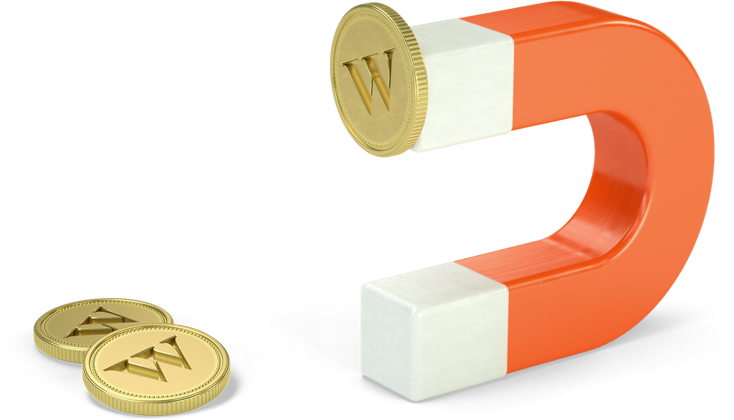Luisa Rollenhagen is a journalist and investor who writes about financial planning for Wealthsimple. She is a past winner of the David James Burrell Prize for journalistic achievement and her work has been published in GQ Magazine and BuzzFeed. Luisa earned her M.A. in Journalism at New York University and is now based in Berlin, Germany.
You know that feeling of hesitation when you’re deciding whether you want to order pizza or Chinese for dinner? And then, when you finally decide on pizza and the food arrives, you wish you had gotten Chinese instead? Congratulations, you’ve just experienced an opportunity cost.
What is an opportunity cost
Opportunity cost is a fundamental economic principle. It's the sacrifice that arises when you make a choice, because in order to enjoy the value of one thing, you must give up the value of another. So in the takeaway dinner example above, the opportunity cost is the Chinese food — it's value to you in terms of taste, how it conforms to your diet, etc. — you decided to forgo in favor of the pizza, and depending on how much you’re now craving lo mein, that opportunity cost can really come back to haunt you.
Opportunity cost involves that “what if” scenario that invariably accompanies any choice. If you get a bonus and decide to spend the money on getting the newest iPhone instead of going on vacation, the question will inevitably arise: “But what if I had gone to Costa Rica? What if I met the love of my life there? What if I would have finally gotten to see a sea turtle in the wild?” The 'what if,' in other words, asks about the net value that you missed out on by getting an iPhone instead of going to Costa Rica. You may never find out what value you've gained or missed out on, but what you do find out if you can is precisely your opportunity cost.
Opportunity costs can of course be more serious than choosing what you’ll eat for dinner or how you’ll spend extra cash. You might choose to rent instead of buying a house, only to realize that two years down the line your rent’s gone up and that house you were eyeing has exponentially increased in price. Or you might choose between attending college or starting a job right after high school to pay the bills. How will that affect your future income? Quality of life? Career options? You might have to choose between investing or saving, or have to decide between two different investments. Opportunity costs affect every aspect of your life, from the most mundane lifestyle choices to major career, family, and financial decisions.
Any sort of strategizing — whether financial, professional, or social in nature — usually includes an evaluation of opportunity costs.
Opportunity cost formula
Economists have established a general formula to help contextualize the weight of your choices. The basic formula is as follows:
Opportunity cost = What you are sacrificing / what you are gaining
In order to understand how much your opportunity cost is, you have to weigh what you’re losing against what you’re gaining if you go through with a particular choice. The whole point of this formula is to ensure that you choose a decision that leads to value, i.e., a choice that allows you to gain more than you lose.
How to calculate opportunity cost
When thinking about opportunity costs, it’s important to understand that they tend to come in two forms: implicit costs and explicit costs.
Explicit costs:
Explicit costs are pretty straightforward: if we’re talking about the takeaway dinner at the beginning of this piece, it’ll be the cost of the Chinese food versus the cost of the pizza, plus tip and delivery fees (side note: tip the people delivering your food!). If you’re thinking of taking up a $400 course to learn how to knit hats for your cat, the explicit cost would be those $400, and what you could have done with that money instead.
Implicit Costs:
The implicit costs is a bit harder to define. They usually represent lost profit or time that was spent toward a bigger project. So if your cat-hat-knitting really takes off and you end up starting a business and train other cat-hat-knitters in order to increase your cat-hat production, the time you spent training and teaching those new knitters would be an implicit cost. Those hours spent training someone new are an implicit cost, because they could have gone towards salaried work. But in the long term, that implicit cost will hopefully pay off.
The currencies with which we calculate opportunity cost are money, time, and effort. These three factors make up the context with which we decide whether a decision has value for us, both in the long and short term. In that way, an opportunity cost works like investing. You’re evaluating whether spending money, time, and/or effort in the short term will save you money/time/effort in the long run.
Opportunity cost example
So let’s look at the cat-hat knitting business you’re suddenly the boss of. After taking that $400 course, you learn that you have a real knack for creating little cat hats, you post some online, and they inexplicably are wildly popular. Someone convinces you to set up a stand at your local weekend market, for $50 a day. Knitting materials to create your hats are another $200. So at this point, you’ve spent $650. That’s the explicit cost. Then there’s also the implicit cost of you taking the time to actually make these hats, as well as the time you spend selling them at the market, time that you could have spent doing something else.
But then you go to the market, and people can�’t get enough. You sell out of your cat hats within hours. Instagram is suddenly flooded with posts of people’s unimpressed cats wearing your hats. Requests start flooding in, for more hats, for custom designs, for licensing options. Your day at the market earned you $500, plus a bunch of new clients. You haven’t made a profit yet, but it’s clear that you will as interest keeps pouring in. In other words, the opportunity cost of those initial $650 you spent paid off.
Opportunity costs in investing
Let’s say you want to invest $500. The explicit opportunity costs would be spending those $500 on new shoes or a small vacation, or putting it into a savings account. Pst, by the way — if you do choose to save, look for high-interest savings accounts that'll maximize your savings. If you do go with investing those $500, then you'll have to consider the fees associated with investing: if you’re going with an investment advisor who will pick stocks for you, you’ll be looking at some steep fees plus commissions on any sales made.
Of course, you could always go with online trading, where commissions are usually lower to nonexistent and you tend to have lower fees. But you're still going to have to do the work of educating yourself about the market, what stocks you want to buy, and staying on top of new market developments. And it should be noted that you're always taking a risk, which wouldn't be the case if you saved the money. But of course, the trade-off is that there's the possibility of more money in the long run than what you started out with.
And then there are also some cheaper investing alternatives for those who'd like to avoid as many fees as possible. Automated advisors charge a fraction of what traditional investment advisors charge. They're also a better bet for newbies, more cautious investors, and those looking to ride the market instead of constantly researching ways to beat it. That's because the algorithms of these so-called “robo-advisors” create portfolios consisting of diversified ETFs that will ensure your eggs are never in just one basket.
But there’s also the implicit cost of how much time you’ll have to wait to see your investment pay off. Many studies have shown that consistent, long-term investing (at least ten years or more) will ultimately ensure you get more bang for your buck. That’s because you’re more likely to be protected against short-term market fluctuations. The risk of your investments devaluing never disappears, but the natural rising and falling of the market won’t be as dramatic for you because statistically, markets level out in the long term.
Another benefit of playing the long game? The magic of compound interest, which means that the interest you earn on a set amount also earns interest, so your total interest earned accrues as time goes by. So if you invest $500, commit to monthly deposits of $200, and have a diversified investment portfolio that generates an average annual 7% in returns, you’d have about $34,143.05 in ten years. Without compound interest, your total contributions would have just been $24,500. So in this case, the total opportunity cost of investing $24.5K (the initial investment plus the monthly deposits over a ten year period) was worth it because you ended up with more than you would have if you had just saved the money.
While there are a lot of things you can buy with $24.5K, there are significantly more you can buy with $34K. Not to mention that that money can significantly bolster savings, go into a retirement fund, or be re-invested in high-yield stocks. That’s why giving up the chance to buy, say, an LED-lit piranha tank for your living room in order to invest the money instead is probably the better choice in the long run; the value you gain in the end is greater than the opportunity cost of not getting that awesome tank.
If all this talk about opportunity costs has gotten you thinking about how to go about putting your money to good use, Wealthsimple is a great place to get started. Our low fees, personalized expert advice, and tailored portfolios will help you get started on your investments and work toward your financial goals. Sign up now.
Trade stocks commission-free
Start trading

